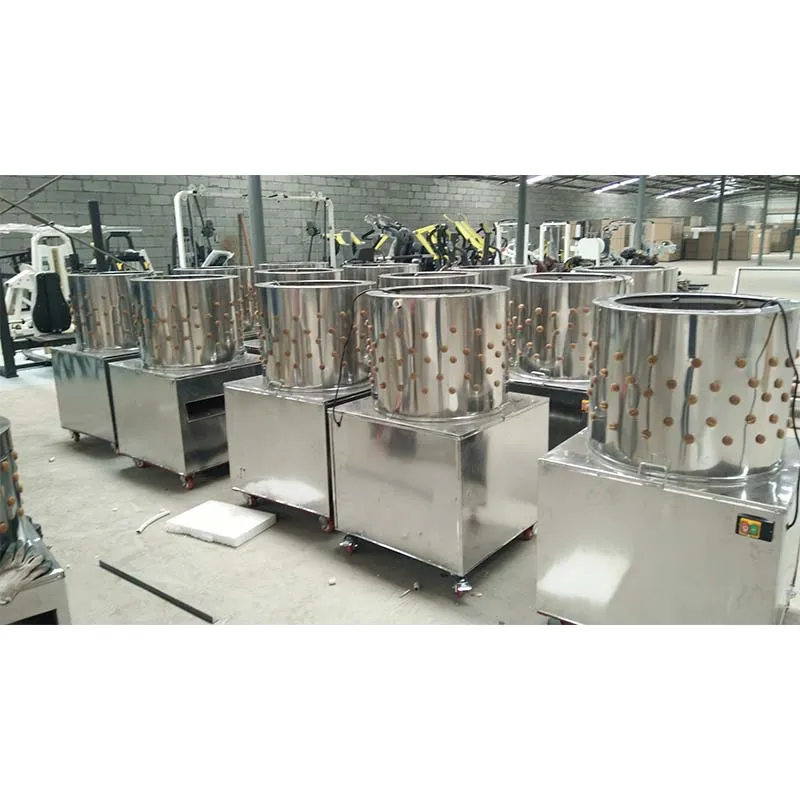chicken scalder and plucker
Nov . 02, 2024 11:40 Back to list
chicken scalder and plucker
The Evolution of Chicken Scalders and Pluckers Enhancing Poultry Processing Efficiency
In the poultry processing industry, efficiency and hygiene are paramount. As demand for chicken continues to rise globally, so does the need for innovative solutions in the processing of this popular protein source. Two key machines that have revolutionized this field are chicken scalders and pluckers. Together, they streamline the processing of chickens, ensuring that both quality and speed meet the increasing consumer demands.
Understanding the Basics Scalding and Plucking
Scalding is an essential pre-processing step that involves immersing the freshly slaughtered chicken in hot water. This process serves a dual purpose it helps to relax the muscles, making the removal of feathers easier, and it effectively kills bacteria on the surface of the bird. Traditional scalding methods relied on large vats of hot water, often requiring significant manual labor and resulting in inconsistent temperatures.
Modern chicken scalders have evolved into sophisticated machines capable of precise temperature control and high throughput. These automated scalders use continuous flow systems that maintain the optimal temperature throughout the process, ensuring uniform scalding. Innovations such as rotary scalders offer improved design, allowing for efficient and effective scalding, significantly reducing the time chickens spend in the water.
Once scalding is complete, the next step in the processing line is plucking. Traditionally, plucking has been a labor-intensive task requiring skilled workers to remove feathers manually. However, the introduction of mechanical pluckers has transformed this aspect of poultry processing. Modern plucking machines, equipped with rubber fingers that mimic the action of human hands, can efficiently remove feathers without damaging the skin or meat.
chicken scalder and plucker

The Benefits of Advanced Technology
The advancements in scalding and plucking technology not only enhance operational efficiencies but also improve the overall quality of the processed chicken. With better scalding techniques, processors can achieve optimal feather removal without compromising the quality of the meat. Additionally, modern pluckers can handle a higher volume of birds, significantly reducing labor costs and processing times.
Moreover, these machines are designed with hygiene in mind. In an industry where food safety is critical, advanced scalders and pluckers incorporate features such as easy-to-clean surfaces and automated cleaning cycles, minimizing the risk of cross-contamination.
Sustainability and Future Innovations
As the industry moves toward more sustainable practices, the design and operation of chicken scalders and pluckers are also evolving. Manufacturers are exploring energy-efficient heating systems for scalders and developing plucking machines that minimize water usage while maximizing cleaning efficiency. These innovations not only contribute to reducing the environmental footprint of poultry processing but also resonate with consumers' growing demand for sustainable food sources.
In conclusion, chicken scalders and pluckers have come a long way from their traditional counterparts. Through automation and innovative engineering, these machines play a crucial role in enhancing the efficiency and hygiene of poultry processing. As the industry continues to evolve, further advancements will no doubt lead to even greater efficiencies, ensuring that quality chicken remains a staple in diets worldwide while addressing modern environmental concerns.
-
Hot Sale 24 & 18 Door Rabbit Cages - Premium Breeding Solutions
NewsJul.25,2025
-
Automatic Feeding Line System Pan Feeder Nipple Drinker - Anping County Yize Metal Products Co., Ltd.
NewsJul.21,2025
-
Automatic Feeding Line System Pan Feeder Nipple Drinker - Anping County Yize Metal Products Co., Ltd.
NewsJul.21,2025
-
Automatic Feeding Line System - Anping Yize | Precision & Nipple
NewsJul.21,2025
-
Automatic Feeding Line System - Anping Yize | Precision & Nipple
NewsJul.21,2025
-
Automatic Feeding Line System-Anping County Yize Metal Products Co., Ltd.|Efficient Feed Distribution&Customized Animal Farming Solutions
NewsJul.21,2025






